Power Supplies
This page is about a series of power supplies which are
not made for ham radio equipment.
However, they are inexpensive, and are readily available.
If you are building a TARPN
Network, then read on.
Disclaimer: This page is about power supplies. You can hurt yourself or burn down buildings
working with power supplies. Pay attention to what you are doing and learn the effects of everything we're talking about here.
If you don't have full confidence in and understanding of what you are doing, you can make a mistake which can hurt
things and you can be hurt. If you read any further, you are taking full responsibility for the results. All of
the information presented here could be wrong. You can be killed. You have been warned.
Make sure you install a fuse between the supply and your wiring such that the fuse will go out before your wiring melts or catches fire.
All power supplies capable of running an entire multi-port node also have the ability to source enough energy that you can ignite a house fire.
For instance, if a radio's protection diode shorts, you will have current flowing from the power supply, through all of the wires and connectors and lug-strips between the supply and the radio.
Heat generated can be up to 1200 watts over a very short piece of electronics.
Fuse for the limitations of your circuit, not the limitations of the supply!
Feel free to use fuses in more than several places.
Make sure you install a fuse between the supply and your wiring such that the fuse will go out before your wiring melts or catches fire.
All power supplies capable of running an entire multi-port node also have the ability to source enough energy that you can ignite a house fire.
For instance, if a radio's protection diode shorts, you will have current flowing from the power supply, through all of the wires and connectors and lug-strips between the supply and the radio.
Heat generated can be up to 1200 watts over a very short piece of electronics.
Fuse for the limitations of your circuit, not the limitations of the supply!
Feel free to use fuses in more than several places.
If you are building a TARPN network, read on.
It is desirous that we have heavy duty power supplies that generate more than 12 Volts (same voltage as a car battery) to power the radios used in a packet node.
There is an additional bonus if the power supply generates 14.2 V because that would allow the supply to also float charge a lead-acid battery used for backup, without additional active components.
Some of these power supplies can be adjusted up to 13 Volts or maybe a little more, but without changing crow-bar circuits, they won't get to 14.2 V.
If we can't get 14.2V out of the surplus power supply, a cheap ($15 or under) AC supply specifically to power the Raspberry PI and NinoTNCs, may be acquired in addition to the surplus suppy used to run the radios.
See also
Robust power for Raspberry Pi
Surplus HP Power Supply — — >60 Amps for between $15 and $40 depending on the vendor and timing
The HP power supply, used for Prolient servers??, are clearly of expensive make.
They are audibly quieter than the cheap LED supply many hams have been buying and has a boat-load more current capacity at 60 Amps or more.
Off the shelf the supply is rated for 12V output.
They can be adjusted to about 12.5 volts.
There were many different models.
For a while we could buy a specific model with a specific PCB and had a specific set of instructions to turn them into 14.2 V output supplies, but that model has become hard to find.
There are many units with identical PCB fingers (intended to plug into a server backplane) that can be used for running 12-13.8 V ham radios.
The HP DPS 1200 FB unmodified supply costed about $25 delivered when we started using them.
They were later driven up by Bit-Coin miners.
The AC power connector is a standard computer/test-equipment grounded cable.
The supply isn't totally acoustically quiet but it is certainly acoustically quieter than your average PC.
It is definitely better than the cheapo LED power supplies.
The DC connection is made by soldering a lug to the wide edge connector for DC- and for DC+. I then ran the
60-amp DC feed to a Square-D ground bus and an automotive 6-way blade fuse holder.
(make sure it is rated for high current!).
The point of the fuse box is to make sure that no wire is ever made to carry more current than it is designed for.
If one of the radios shorts out, you don't want 1000 Watts of energy to be bringing it to a boil!.
Note that the modification to the HP supply does require some decent soldering and hacking techniques.
If you would like to consult with engineers, machinists and electricians, we have such who are in our group and who read the TARPN groups-io email reflector.
Send an email to the reflector and talk about what you have in mind.
Please restrict these queries to help in building a TARPN class packet network or set of TARPN nodes.
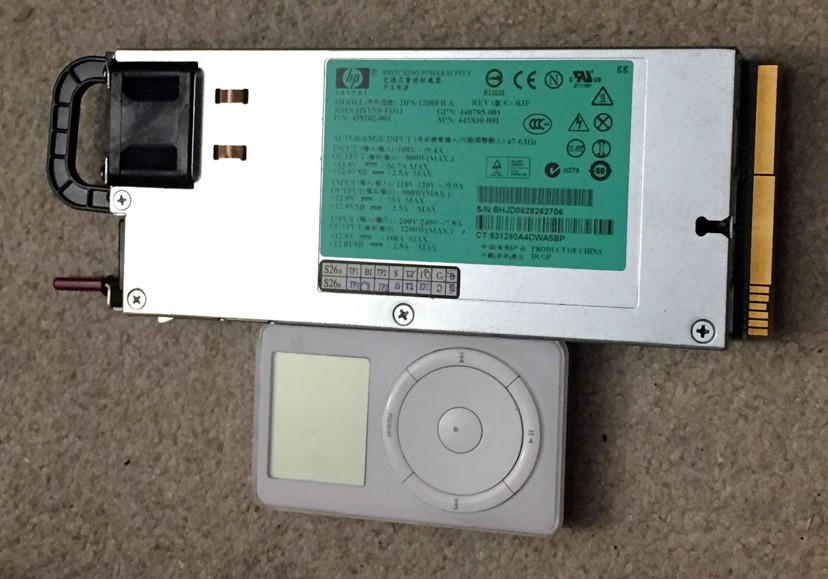
The supply, unmodified, provides 12v at high current to the HP server computer.
Out of the server the supply won't even turn on unless we do some modifications.
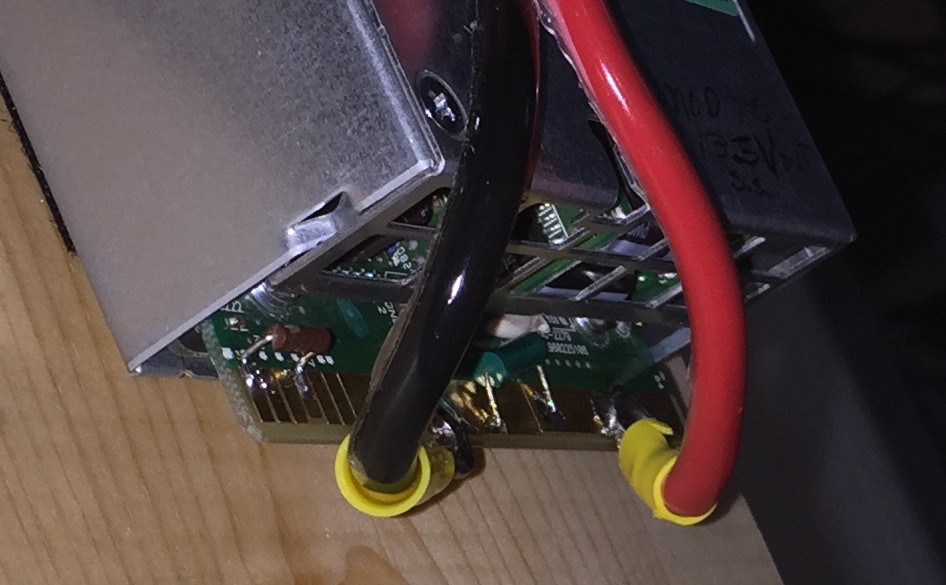 Click to enlarge.
Click to enlarge.
There are several modifications made to the supply.
A modification gives us a handy connection point for the 12v output and turns on the power supply.
Both of these mods are needed because the supply won't be plugged into the server it was designed for.
The modification needed to make the supply work outside of its normal Server rack are to solder a resister across two pads on the edge card connector.
The resistor value can be from your junk-box and doesn't require a specific value though it should be between 300 ohms and 1K ohms.
In the left hand resistor in the photo, between the small pins of the edge connector, the resistor is providing a logic high so the supply thinks it is inserted into its Server rack cage.
The photos show both a resistor and a capacitor between the -V and +V output terminals.
These parts have been shown to not be particularly valuable, though one ham familiar with the supply added those parts to supplies he was modifying.
Your author here is not familiar with the design so I'm standing on the shoulders of somebody who is probably really uncomfortable (because I'm heavy).
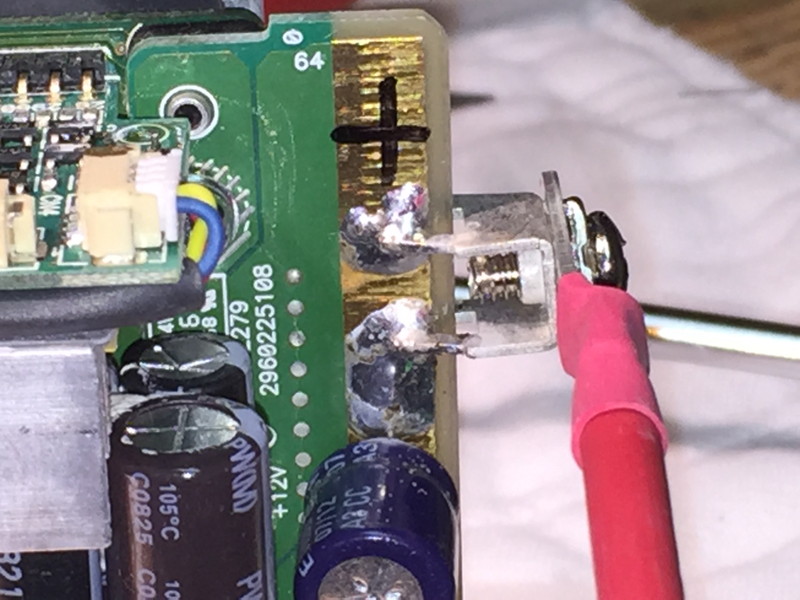
|
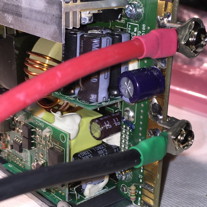
|
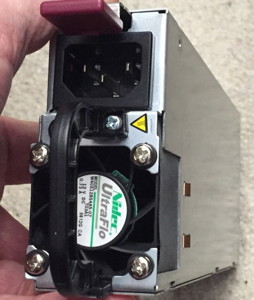
|
|
The part used in the above photo for attaching the DC wires is a TERM SCREW VERT SNAP-IN PC MNT.
Digikey 7693K-ND
|
Another modification to bring output voltage from 12.5v to 14.2v involved adding two resistors internally.
TARPN network builders should contact me directly for more details.
Please contact us before you buy your supplies so we can get the proper RMN: number and P/N: number.
We'll want to get together with your network group and talk about what resources we can trade back and forth.
We have several members in the central NC area who can do the power supplies.
If you are local to one of the existing TARPN networks, or within driving distance, we'd prefer to do the mods in quantity.
Getting together for a Saturday lunch is a good thing.
|
|
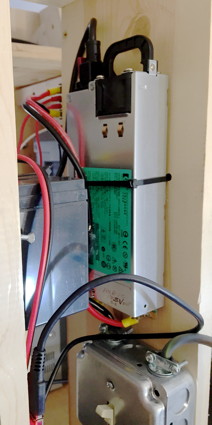
|
|
In the above node cabinet, the HP supply is attached to the box with velcro and then tie-wraps to keep it tight.
The fan blows hot air out from the supply so it should be on the top or blowing out of the node cabinet.
Since the DC output cables are soldered down, they are strain reliefed under the tie wraps so they won't wiggle when bumped or transported.
The AC cord, which is a standard PC cable, is cut and clamped into the electrical box.
This makes sure the power supply doesn't get yanked if the cord is pulled.
Also this gives a handy place to turn the node rack on and off.
Another thing that might be done is to glue wood trim pieces around the supply so it can't wiggle, and then tie wrap it in.
This might feel more rigid than velcro while still enabling the supply to be removed by cutting the tie wraps.
|
|
Use
this Powerwerx $20 fuse block
for distributing power from the HP supply -- and maybe for the LED supply.
#10-32 stud. 25A max per output, 100A max per block
My new plan is to use a
10 pole #8 ring terminal barrier strip and #8 ring terminals for ground distribution. I run the heavy wire from
the V- negative side of the HP supply to a ring terminal on the barrier strip, then take that same terminal and run copper #14
solid core down that side of the barrier strip, around each of the screws. Now the other side of the barrier strip has
terminals for 10 ground connections.
The V+ positive side of the power supply goes to the fuse block.
Powerpole connections: I connect an 18 gauge red/black cord from a powerpole plug.
Run the red side to the fuse block and the black side to the barrier strip, using the #8 ring terminals for each.
Alternate plan is to use a ground bar like the one shown in the bottom pic for V- connection.
Now I have six fused power-pole connections to go to the radios or TNCs (like KPC-3, MFJ-1280b, DRSI-9600 etc)
SKIP node is up using this new plan. Photo at the bottom.
|
Amazon
Fuse Block

|
Parts Express
Barrier Strip
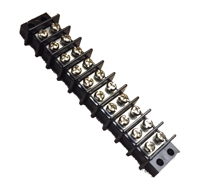
|
Parts Express
50 pack of ring terminals
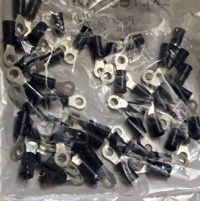
|
From Lowes, Square D Load Center Ground Bar Kit, Item #: 67699 | Model #: PK7GTACP

|
Red Black 'zip cord' wire, < $50 for 500'
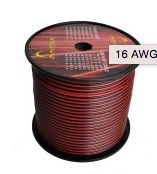
If that link doesn't work: see phone Number
|
|
Photo on the right shows power distribution using the fuse box, ground bar and PowerPole connectors with the HP power supply.
|
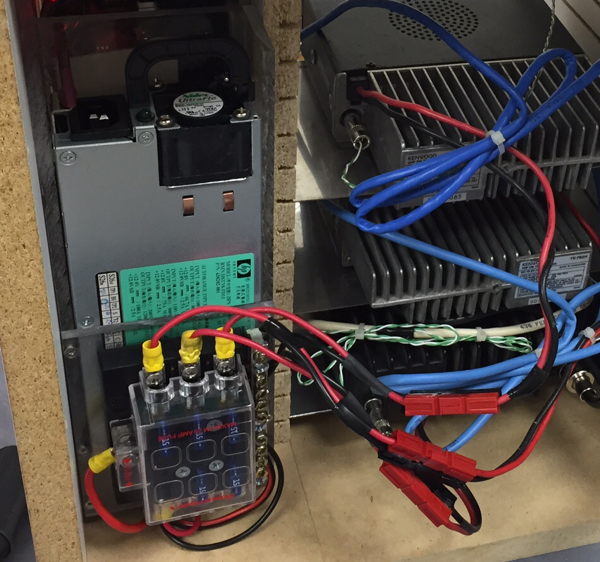
|
|
|
|
|
 Click to enlarge.
Click to enlarge.